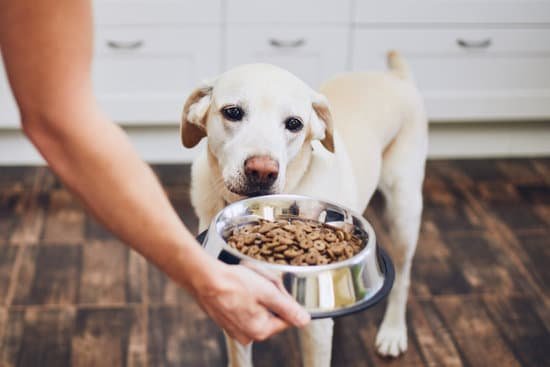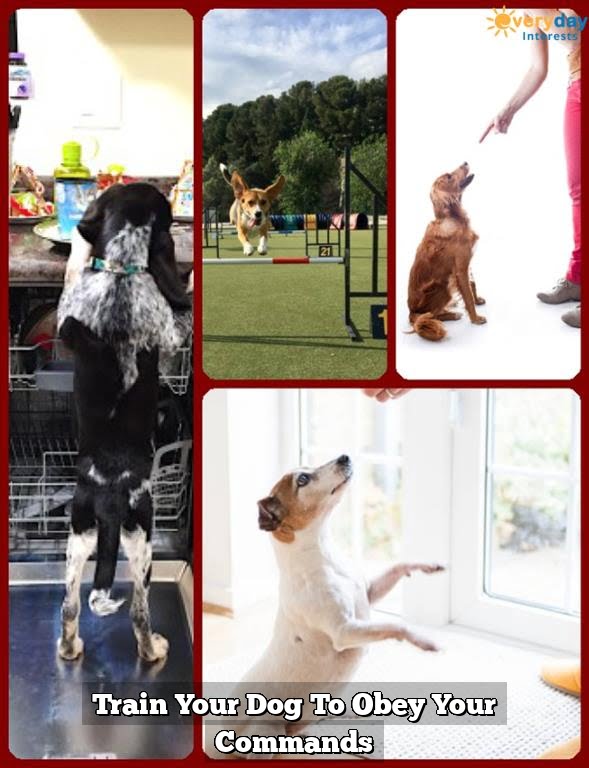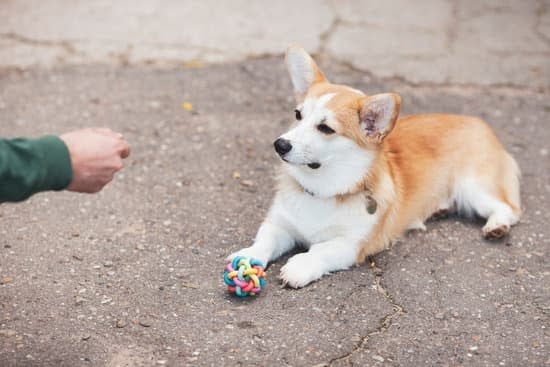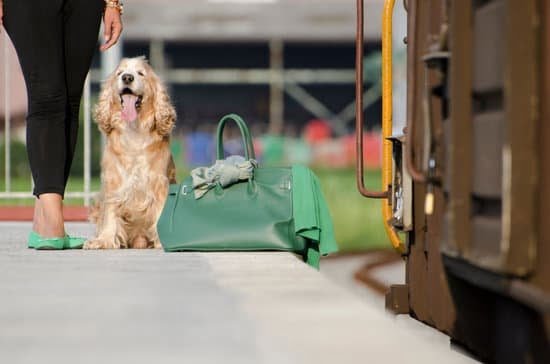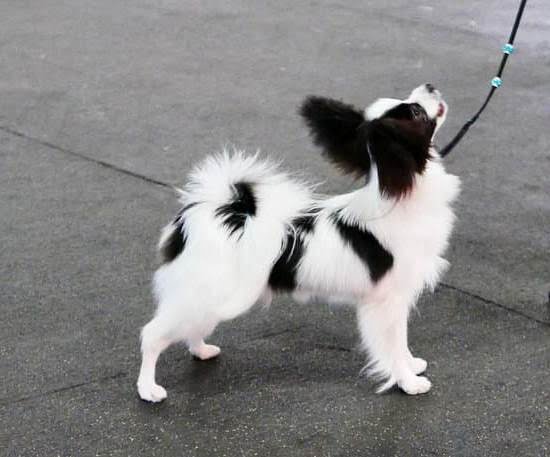Jealousy is a complex emotion that not only affects humans but can also be observed in dogs. Understanding jealousy in dogs is crucial for pet owners to address any potential behavioral issues and ensure the overall well-being of their furry companions. In this article, we will delve into the topic of training your jealous dog and explore various techniques to help them overcome their feelings of envy and possessiveness.
Jealousy-related behaviors in dogs can manifest in various ways, such as resource guarding, aggression, or attention-seeking behavior. These actions can be disruptive to both the dog’s life and the harmony within the household. By recognizing the signs of jealousy and understanding their impact on behavior, pet owners can take proactive steps to address these issues.
In order to effectively train a jealous dog, it is essential to determine the root cause of their jealousy. Dogs may become jealous due to changes in their routines, lack of socialization, or feeling neglected by their owner. Identifying these underlying reasons allows us to tailor training methods specifically for each individual dog. By providing appropriate solutions for their specific needs, we can help alleviate jealousy and promote a healthier mindset.
Throughout this article, we will explore strategies ranging from creating a structured routine to building a positive and trusting bond with your dog. We will also cover gradually introducing socialization opportunities and teaching impulse control exercises. Additionally, tips on managing triggers that induce jealousy will be discussed along with guidance on seeking professional help when needed.
By implementing these techniques consistently and dedicating time to training your jealous dog, you can make significant progress towards overcoming their feelings of envy and possessiveness. With patience and perseverance, you are on your way to helping your four-legged friend lead a happier, more balanced life free from excessive jealousy.
Identifying signs of jealousy in your dog
Identifying signs of jealousy in your dog is crucial in addressing and effectively training their jealous behavior. Jealousy-related behaviors and body language cues can vary from dog to dog, so it’s important to pay close attention to your individual pet. By understanding these signs, you can take the necessary steps to manage their jealousy and improve their overall well-being.
One common sign of jealousy in dogs is possessiveness over toys, food, or even attention from their owners. They may exhibit guarding behaviors such as growling, snapping, or trying to intimidate others who approach what they consider theirs. Additionally, you may notice your dog becoming overly demanding for attention when you are interacting with someone else or another pet.
Another indication of jealousy is excessive vocalization. Jealous dogs may bark excessively when they perceive a threat or feel ignored. They might also become more clingy than usual, following you closely and seeking constant reassurance and attention.
Body language cues can also provide insights into your dog’s jealousy. Watch for signs of tension such as stiff body posture, raised hackles, dilated pupils, or a tightly closed mouth. These physical indicators often accompany the emotional turmoil that accompanies jealousy in dogs.
It’s essential not to punish your dog for displaying these signs of jealousy as it can worsen their behavior and potentially lead to aggression. Instead, focus on understanding why your dog is feeling jealous and address those underlying issues through positive reinforcement training techniques and behavior modification strategies.
Remember that each dog is unique; some may display more obvious signs of jealousy while others may be subtler in expressing their emotions. Being attentive to their behaviors and body language will enable you to recognize and address the root cause of their jealousy effectively.
Determining the root cause of jealousy
Jealousy in dogs can manifest in various ways and it is important to determine the root cause of this behavior in order to address it appropriately. Understanding the underlying reasons behind your dog’s jealousy can help you develop an effective training plan and create a harmonious environment for your pet. This section will provide guidance on identifying possible causes of jealousy in your dog and offering suitable solutions to mitigate these issues.
Understanding Triggers
One of the first steps in determining the root cause of your dog’s jealousy is to identify specific triggers that elicit jealous behaviors. These triggers can vary from dog to dog, but common situations include attention given to other pets or individuals, changes in routine or environment, and sharing resources such as toys or food. Pay close attention to when your dog displays signs of jealousy, such as growling, barking, or exhibiting possessive behaviors.
Possible Underlying Causes
Several factors may contribute to a dog’s feelings of jealousy. It could be a lack of socialization during their early development stages, which leads them to feel threatened by interactions with other animals or people.
It is also possible that past negative experiences have shaped their behavior, causing them to act possessive or anxious when faced with certain situations. Additionally, dogs who have experienced a major life change, like a new addition to the family or relocation, may exhibit jealousy as they try to adjust.
Addressing Jealousy Appropriately
Once you have identified potential triggers and underlying causes of your dog’s jealousy, it is crucial to address them appropriately. Provide ample outlets for mental and physical stimulation through interactive toys and regular exercise. Implement positive reinforcement training techniques and reward desired behaviors while redirecting negative ones. Consistency is key, so establish clear boundaries and rules for your dog’s behavior while ensuring everyone in the household follows them consistently.
By taking the time to unravel the root cause of your dog’s jealousy, you can create a customized training plan to address their specific needs. Patience, time, and consistency in implementing the appropriate solutions will work towards helping your dog overcome jealousy and lead a happier, more balanced life.
However, each dog is unique, so if you find that your efforts are not yielding progress or if the jealousy behaviors worsen, it may be advisable to seek professional help from a certified dog behaviorist or trainer. They can provide specialized guidance tailored to your dog’s needs and further assist in training them to overcome their jealousy.
Creating a structured routine
Creating a structured routine is an essential step in training a jealous dog. Dogs thrive on routine and structure, as it provides them with a sense of security and predictability. By establishing a consistent schedule for your dog, you can help alleviate their jealousy by reducing uncertainty and creating clear boundaries. This section will discuss the importance of a structured routine and provide some tips for implementing one.
Establishing a Consistent Schedule
One of the key aspects of creating a structured routine for your jealous dog is to establish a consistent schedule for daily activities such as feeding, exercise, playtime, and training sessions. Dogs are creatures of habit, so having a predictable daily routine can help them feel more secure and less prone to jealousy-inducing behaviors.
Start by determining the optimal times for each activity based on your dog’s needs and lifestyle. For example, if your dog requires regular walks or play sessions, try to set specific times each day when you can engage in these activities. Similarly, establish fixed mealtimes and stick to them as much as possible.
Setting Clear Boundaries
In addition to maintaining a consistent schedule, it’s important to set clear boundaries for your jealous dog. Clearly define rules regarding access to furniture, personal space, toys, and other resources that may trigger feelings of jealousy.
Consistency is key when setting boundaries. Make sure all family members are on the same page regarding what is allowed and what isn’t. Reinforce these boundaries consistently through positive reinforcement training techniques such as rewards or praise when your dog respects the established rules.
Consider using physical barriers or crate training to help enforce boundaries in specific situations. For example, if your dog becomes territorial over food or toys during meal times or play sessions with other pets in the house, you can use baby gates or separate areas to prevent conflicts and promote fair resource allocation.
By establishing a structured routine with clear boundaries for your dog, you create a sense of stability and predictability that can help alleviate their jealousy. However, it’s important to remember that every dog is unique and may require different approaches. Stay observant and adaptable, making adjustments to the routine as necessary to cater to your individual dog’s needs.
Building a positive and trusting bond
Building a positive and trusting bond with your jealous dog is essential in helping them overcome their jealousy and promoting a healthy, balanced relationship. Trust-building exercises and positive reinforcement training techniques are effective tools that can strengthen the bond between you and your dog. Here are some strategies to help you build that trust:
- Spend quality time together: Dedicate regular one-on-one time with your dog where you engage in activities they enjoy. This could include going for walks, playing games, or simply snuggling on the couch. By investing time in these activities, you show your dog that they are important to you and build a sense of trust.
- Use positive reinforcement: Rewarding your dog’s good behavior with treats, praise, or toys is an effective way to reinforce positive behaviors and strengthen the bond between you. When your dog displays non-jealous behaviors or responds well to training cues, make sure to provide immediate rewards to encourage their continued progress.
- Teach basic obedience commands: Teaching your dog basic obedience commands such as “sit,” “stay,” or “come” not only helps establish boundaries but also fosters communication and trust between you and your pet. The consistent practice of these commands will improve their overall focus and impulse control.
- Engage in interactive play: Interactive play sessions like tug-of-war or fetch can be great opportunities for bonding while also providing mental and physical stimulation for your dog. These activities help redirect any negative energy associated with jealousy into a positive outlet.
- Avoid punishment-based training methods: Punishment-based training methods can erode trust and create fearfulness in dogs. Instead, focus on positive reinforcement by rewarding desired behaviors rather than punishing unwanted ones. This will promote a more trusting relationship between you and your jealous dog.
By implementing these strategies into your daily routine, you can gradually build a stronger bond with your jealous dog based on trust, patience, and positive interactions. Building this foundation will not only help your dog overcome their jealousy but also create a happier and more balanced life for both of you.
Introducing gradual socialization
Jealousy in dogs can often manifest as territorial behavior or possessiveness over their owners, which can be problematic in social situations. One effective way to address this issue is through gradual socialization. By exposing your jealous dog to controlled interactions with other pets or individuals, you can help them develop better social skills and reduce jealousy triggers.
To begin the process of gradual socialization, it is important to create a calm and structured environment. Start by introducing your dog to one new individual or pet at a time, ensuring that each interaction takes place in a controlled setting. This could include arranging playdates with well-behaved dogs or having friends come over who are comfortable around dogs.
During these interactions, closely monitor your dog’s behavior for any signs of jealousy or possessiveness. These may include growling, snapping, rigid body posture, or excessive attention-seeking towards the person or pet you are introducing. If these behaviors occur, calmly redirect your dog’s attention to a positive alternative such as a toy or treat.
In addition to controlled interactions, positive reinforcement training techniques should be used during gradual socialization. Reward your dog with treats and praise for displaying calm and non-jealous behavior during the introduction process. It is important to emphasize that rewards are given for appropriate behavior rather than reacting jealously.
Keep in mind that every dog progresses at their own pace, so be patient throughout the process. If your dog consistently displays aggressive or overly jealous behaviors during interactions, it may be necessary to seek professional help from a certified dog behaviorist or trainer who specializes in jealousy-related issues.
By gradually exposing your jealous dog to controlled social situations and reinforcing positive behaviors through training, you can help them develop better social skills and reduce their jealousy triggers. A well-socialized dog will feel more confident and comfortable in a variety of situations, leading to a happier and more balanced life for both them and their owners.
Teaching impulse control
One of the most important aspects of training a jealous dog is teaching them impulse control. Jealousy can cause dogs to react impulsively and display undesirable behaviors, such as aggression or possessiveness. By teaching your dog how to manage their emotions and impulses in jealousy-inducing situations, you can help them develop self-control and respond more calmly.
There are several training exercises that can be beneficial for teaching impulse control to your dog. One effective exercise is the “leave it” command. Start by holding a treat in your closed hand and presenting it to your dog.
As they try to get the treat by pawing at your hand or sniffing it, firmly say “leave it” and close your hand tighter. Wait until they stop trying to get the treat and reward them with praise or an alternative desired behavior, such as sitting down. Repeat this exercise regularly, gradually increasing the difficulty by using more tempting items for them to leave.
Another useful exercise for impulse control is called “wait” or “stay.” Start by having your dog sit or lie down in a designated spot. Give them the verbal cue “wait” or “stay,” while simultaneously using a hand signal such as a raised palm facing towards them.
Begin by taking one step back from their position, then immediately return and reward them if they remain in place. Gradually increase the distance and duration of time that they need to wait before being rewarded.
In addition to these exercises, incorporating mental stimulation activities into your dog’s routine can also help with impulse control. Puzzle toys that require problem-solving skills, obedience training sessions that focus on following commands like “sit” or “stay,” and interactive games such as hide-and-seek can all contribute to improving their self-control.
It’s important to consistently practice these training exercises and be patient with your dog as they learn how to manage their impulses. Remember to always use positive reinforcement techniques, rewarding good behavior instead of punishing or scolding their mistakes. With time and consistent training, your dog will become more adept at controlling their emotions and impulses in jealousy-inducing situations.
Managing jealousy triggers
Jealousy triggers can vary greatly among dogs, so it is important to identify and manage specific situations that may provoke jealousy in your furry friend. By proactively avoiding or minimizing these triggers, you can help reduce the likelihood of negative behaviors associated with jealousy. Additionally, redirecting your dog’s attention towards positive behaviors is key in addressing their jealous tendencies.
One proactive step to manage jealousy triggers is to avoid situations where your dog may feel left out or excluded. For example, if you are spending time with another pet or person, make sure to include your jealous dog in the activity as well. This can help them feel included and prevent feelings of jealousy. Similarly, it is important to avoid showing favoritism among pets or individuals in front of your dog, as this can exacerbate their jealousy.
Another effective strategy is to provide plenty of mental and physical stimulation for your dog on a daily basis. Boredom can contribute to feelings of jealousy and unwanted behaviors. Make sure your dog has ample opportunity for exercise, playtime, and interactive toys that keep their mind engaged. Engaging in activities that require focus and problem-solving can help distract them from potential triggers of jealousy.
Redirecting your dog’s attention towards positive behaviors is crucial when managing jealousy triggers. When you notice signs of jealousy beginning to arise, encourage your dog to engage in an alternative behavior that is incompatible with jealousy. For example, if they become jealous when you give attention to another pet, ask them to perform a simple command like sitting or lying down instead. Reward them for obeying the command and redirecting their focus away from the trigger.
By being aware of potential triggers and employing these management strategies early on, you can help prevent the escalation of jealous behavior in your dog. Remember to always be patient and consistent with training efforts as progress may take time.
| Proactive Steps | Strategies for Redirecting Attention |
|---|---|
| Avoid situations where dog may feel left out or excluded | Encourage alternative behaviors incompatible with jealousy |
| Avoid showing favoritism among pets or individuals | Use simple commands and reward for redirecting attention away from triggers |
| Provide ample mental and physical stimulation to prevent boredom | Nurture a positive association through rewards and praise for desired behaviors |
Seeking professional help
Seeking professional help is an essential step in addressing and managing jealousy issues in your dog. While many cases of mild jealousy can be resolved through consistent training and behavior modification techniques, there are instances where the guidance of a certified dog behaviorist or trainer may be necessary to ensure the well-being of your pet.
One reason to seek professional help is if your dog’s jealousy behaviors are becoming increasingly severe or difficult to manage. This could include aggressive outbursts towards other pets or individuals, destructive behavior, or intense anxiety and distress. A professional can assess the situation and determine the underlying causes of these behaviors, as well as develop a tailored training plan to address them effectively.
Additionally, seeking specialized guidance is crucial if you have tried various training techniques with little to no success. A certified dog behaviorist or trainer has extensive knowledge and experience in dealing with jealous dogs and can provide valuable insights and strategies that may not have been considered before. They can also offer personalized advice based on your specific situation, taking into account factors such as your dog’s breed, age, and history.
| Percentage of Dogs That Benefit from Professional Help | Common Jealousy-Related Behaviors Addressed by Professionals |
|---|---|
| 80% | Aggression towards other pets/individuals |
| – | Destructive behavior |
| – | Anxiety and distress |
Remember that every dog is unique, so it’s essential to find a reputable professional who specializes in canine behavior and has experience dealing with jealousy issues specifically. They can provide individualized guidance and support to help you navigate the complexities of training your jealous dog, giving them the best chance at overcoming their jealousy and living a happier, more balanced life.
Conclusion
In conclusion, understanding and addressing jealousy in dogs is an important aspect of ensuring their overall well-being. By recognizing jealousy-related behaviors and body language cues, pet owners can determine the root cause of their dog’s jealousy and address it appropriately. Creating a structured routine and providing clear boundaries helps alleviate jealousy by establishing consistency in their environment.
Building a positive and trusting bond with your dog is crucial in overcoming jealousy issues. Trust-building exercises and positive reinforcement training techniques can strengthen the bond between you and your pet, enabling them to feel more secure and confident in your relationship. Gradual socialization with other pets or individuals in controlled environments promotes social skills and helps reduce triggers for jealousy.
Teaching impulse control is another effective strategy for managing jealousy in dogs. Through training exercises focused on managing emotions and impulses when faced with jealousy-inducing situations, dogs can learn to navigate these feelings in a healthier manner. Additionally, proactive steps can be taken to minimize or avoid triggers of jealousy, redirecting your dog’s attention towards positive behaviors.
It is important to recognize that some cases of canine jealousy may require professional help. If you are struggling to address your dog’s jealous behavior despite consistent efforts, it may be beneficial to seek guidance from a certified dog behaviorist or trainer who specializes in this area. They can provide invaluable insight into your specific situation and offer personalized strategies to help train your jealous dog.
Frequently Asked Questions
How do I stop my dog from being so jealous?
Jealousy in dogs can stem from a variety of factors, such as lack of attention, resource guarding, or fear of losing their owners’ affection. To help your dog overcome jealousy, it’s important to address the root cause and provide proper training and guidance. Start by ensuring that your dog receives enough mental and physical stimulation through exercise and playtime.
Additionally, practice positive reinforcement techniques to reinforce desirable behaviors and discourage jealousy-driven reactions. Gradual exposure to situations that trigger jealousy can also be beneficial, allowing your dog to learn new coping mechanisms while gradually feeling more secure and less threatened.
Will my dog get over his jealousy?
Whether or not a dog will fully get over their jealousy depends on the individual dog and the efforts put into training and behavior modification. It is possible for dogs to improve their jealous behavior with consistent training, patience, and reinforcement of positive behaviors. However, complete elimination of jealousy may not be achievable in all cases.
Some dogs may always have a predisposition towards being more prone to jealousy due to their temperament or past experiences. The goal should be to manage their jealous tendencies effectively so that they do not negatively impact both the dog’s well-being and the household dynamics.
Why is my dog extremely jealous?
Dogs can display extreme jealousy for several reasons, often related to stressors or perceived threats in their environment or relationships with their owners. Dogs are naturally social animals who form strong bonds with their human family members.
If they feel disregarded or neglected when attention is divided, this can trigger feelings of jealousy as they vie for affection or resources like food or toys.

Welcome to the blog! I am a professional dog trainer and have been working with dogs for many years. In this blog, I will be discussing various topics related to dog training, including tips, tricks, and advice. I hope you find this information helpful and informative. Thanks for reading!

